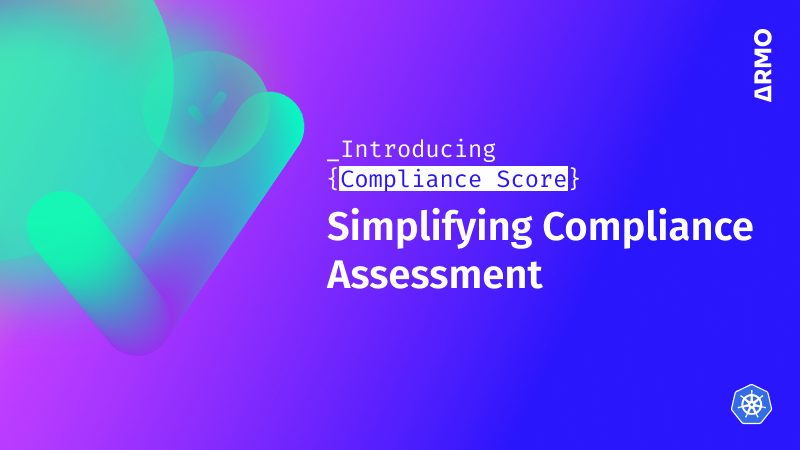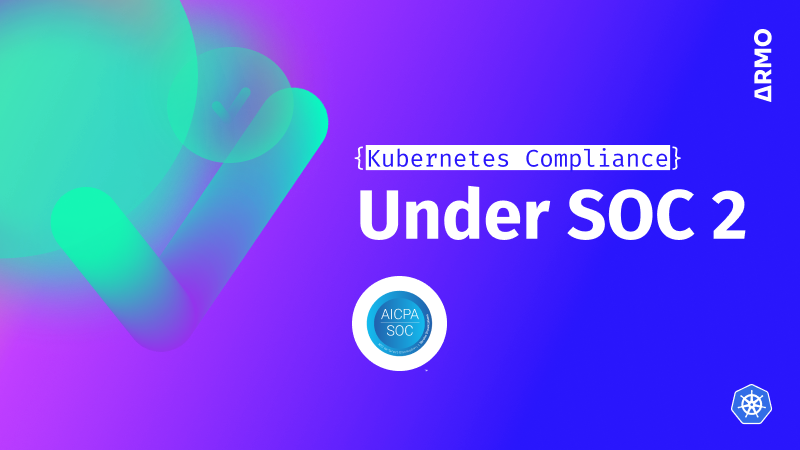An essential guide to achieving compliance with Kubernetes
Learn about Kubernetes compliance challenges, consequences of non-compliance, and get guidance on maintaining a secure...

Jun 15, 2023
Kubernetes has become a vital component in cloud-native infrastructure, enabling organizations to deploy and manage containerized applications at scale. However, compliance is crucial to modern infrastructure, especially for businesses that handle sensitive data. Organizations that adopt Kubernetes must thus also be sure to maintain the security of their infrastructure, as well as address compliance requirements to meet regulatory standards.
This article will provide an overview of compliance requirements for Kubernetes, discuss how organizations can achieve compliance certification using various Kubernetes distributions, and compare the compliance status of those distributions. It will also offer up best practices and review the importance of monitoring and remediation.
Kubernetes distributions provided by cloud providers such as Google, Amazon, and Microsoft have become increasingly popular. They all offer different tools and strategies to help organizations achieve compliance. This section will review popular Kubernetes distributions and compare their compliance status.
Google Cloud has a strong focus on security and compliance, and GKE provides a range of built-in security features to facilitate compliance. For example, GKE supports role-based access control (RBAC), enabling organizations to limit access to Kubernetes resources based on user roles and permissions.
GKE also includes Kubernetes network policies. These allow organizations to define network traffic rules for their clusters to help secure communication between pods and services. Additionally, GKE integrates with Google’s Cloud Security Command Center, which provides a centralized view of security and compliance risks across all Google Cloud services.
As part of the AWS shared responsibility model, securing the underlying infrastructure of EKS is AWS’ responsibility, while customers are responsible for securing the workloads running on EKS. To help customers achieve compliance, EKS provides a range of security features and tools; these include AWS IAM for identity and access management, AWS Key Management Service (KMS) for data encryption, and AWS CloudTrail for audit logging.
EKS also provides integration with third-party compliance automation tools such as Sysdig and Aqua Security, which can help organizations automate compliance monitoring and reporting.
Like EKS, AKS has a shared responsibility model. Microsoft Azure is responsible for securing the underlying infrastructure of the service, while customers take on the responsibility of securing the workloads running on AKS.
To help customers achieve compliance, AKS provides various security features such as Azure Active Directory (AD) for identity and access management, Azure Disk Encryption for data encryption, and Azure Monitor for audit logging. AKS also provides integration with third-party compliance automation tools such as Aqua Security and Sysdig.
A comprehensive set of tools, services, and certifications of the distributions is summarized in the following table.
| Compliance Category | Google Kubernetes Engine (GKE) | Amazon Elastic Kubernetes Service (EKS) | Azure Kubernetes Service (AKS) | |
| Certifications | SOC 1, SOC 2, SOC 3, PCI DSS, HIPAA, ISO 27001 | SOC 1, SOC 2, SOC 3, PCI DSS, HIPAA, ISO 27001 | SOC 1, SOC 2, SOC 3, PCI DSS, HIPAA, ISO 27001 | |
| Security controls | Kubernetes security features, Binary Authorization, Config Connector | AWS security features, AWS IAM roles for Kubernetes, Amazon EKS best practices | Azure Security Center, Azure Policies, Azure AD for Kubernetes | |
| Compliance automation | Google Cloud Asset Inventory, Google Cloud Security Command Center | AWS Config, AWS CloudTrail, AWS CloudWatch Events | Azure Security Center, Azure Policies, Azure Security and Compliance Blueprint | |
| Monitoring and logging | Google Cloud operations, Cloud audit logs | Amazon CloudWatch, AWS CloudTrail, AWS CloudTrail Insights | Azure Monitor, Azure Log Analytics | |
| Certificate management | Google Certificate Manager, Let’s Encrypt | AWS Certificate Manager | Azure Key Vault | |
| Encryption | Google Cloud KMS, Google Cloud HSM | AWS KMS, AWS CloudHSM | Azure Key Vault, Azure Disk Encryption | |
| Identity and access management | Google Cloud IAM, Google Cloud Identity-Aware Proxy | AWS IAM, AWS KMS, AWS Cognito | Azure Active Directory, Azure Kubernetes Service managed identities | |
| Industry-specific regulations | NIST, FedRAMP, HIPAA, FISMA, CJIS | HIPAA, HITRUST, DoD, FIPS, ITAR | HIPAA, FedRAMP, DoD, DISA, CJIS | |
GKE, EKS, and AKS provide a range of security features and tools to help organizations achieve compliance. However, it is important to note that the organization is ultimately responsible for ensuring that their workloads and applications are fully compliant with industry-specific regulations.
This may require additional measures beyond those provided by the Kubernetes distributions; these may include implementing security policies, conducting regular security audits, and establishing incident response plans. The following section will discuss best practices for achieving compliance with Kubernetes, regardless of the distribution used.

Attaining a state of compliance with Kubernetes requires a combination of best practices and the use of appropriate tools and strategies, which we discuss in this section.
Organizations should regularly perform security assessments and vulnerability scans to identify potential security risks, vulnerabilities, and misconfigurations in their Kubernetes clusters.
Implementing role-based access control and audit logging is critical to controlling access to Kubernetes resources and tracking changes to Kubernetes clusters.
Different industries have different regulatory requirements that must be met for compliance purposes. Organizations should understand the specific regulations that apply to their industry and ensure that their Kubernetes clusters meet these requirements.
Encryption of data at rest and in transit is essential for protecting sensitive data; organizations should implement encryption for all data transmitted over their Kubernetes clusters.
Organizations should establish a robust incident response plan that outlines the steps to be taken in the event of a security incident. This plan should include procedures for identifying, containing, and responding to security incidents.
Different Kubernetes distributions provide various tools and strategies to help organizations implement these best practices. However, Kubernetes is a dynamic environment where applications, infrastructure, and configurations change constantly. Therefore, it is critical you have continuous monitoring and automated remediation to achieve compliance with Kubernetes.
Implementing security controls in Kubernetes is not a one-time task but an ongoing process requiring continuous scanning, monitoring, and remediation. Continuous scanning helps organizations identify security risks and vulnerabilities in their Kubernetes clusters, while automated remediation can help to address these risks quickly and efficiently.
Organizations can implement several security controls in Kubernetes, such as:
However, implementing these security controls manually can be time-consuming and error-prone. This is one of the main reasons organizations adopt compliance automation tools to help manage their Kubernetes clusters and ensure they are meeting compliance requirements. These tools continuously monitor Kubernetes clusters to detect misconfigurations, vulnerabilities, and security incidents in real time. They can then provide automated remediation and generate compliance reports to demonstrate compliance with regulatory requirements.
In the next section, we will discuss ARMO Platform, an open-source-based Kubernetes security tool that provides advanced security features to help organizations achieve compliance with Kubernetes.
ARMO Platform is the enterprise solution based on Kubescape – A multi-cloud Kubernetes and CI/CD security single pane of glass, which is totally cloud agnostic.
ARMO Platform offers a comprehensive set of advanced security features to help organizations monitor and secure their Kubernetes clusters:
ARMO Platform supports multiple compliance frameworks out of the box, with the largest library of controls currently available (over 200). You can create your own frameworks based on these or even create your own controls.
Achieving compliance with Kubernetes is an ongoing process that requires continuous monitoring, remediation, and automation. Organizations can achieve compliance while using different Kubernetes distributions via tools and best practices. However, they need to understand the compliance status of each distribution and how it may affect their organization. To see how ARMO can help your organization achieve compliance with Kubernetes, try it out for free today!

The only runtime-driven, open-source first, cloud security platform:
Continuously minimizes cloud attack surface
Secures your registries, clusters and images
Protects your on-prem and cloud workloads

Learn about Kubernetes compliance challenges, consequences of non-compliance, and get guidance on maintaining a secure...

Improve Kubernetes compliance with ARMO Platform's user-friendly Compliance Score for enhanced security. Click here to...

This post discusses the five Trust Services Criteria (TSC) of SOC 2 and how they...